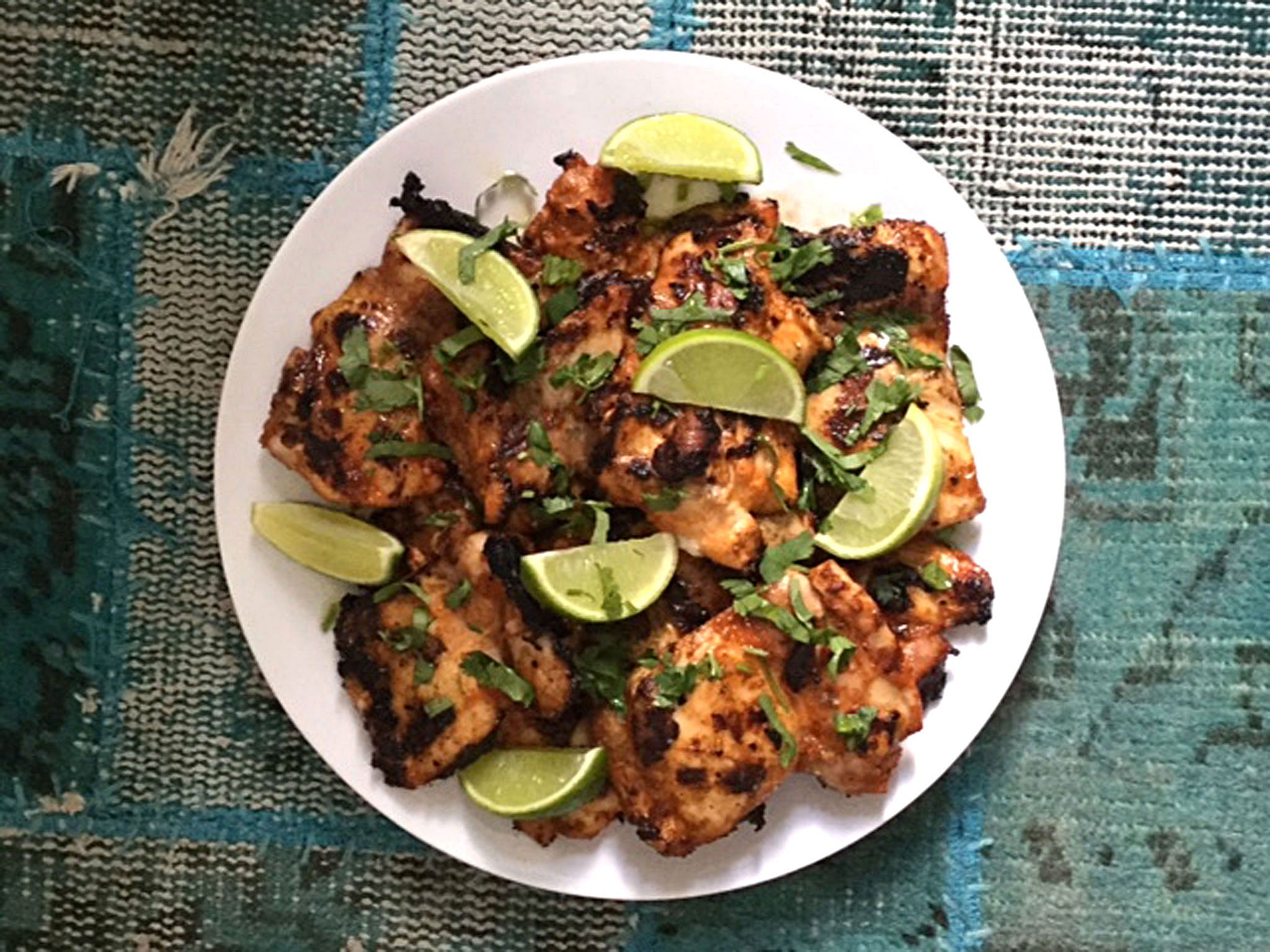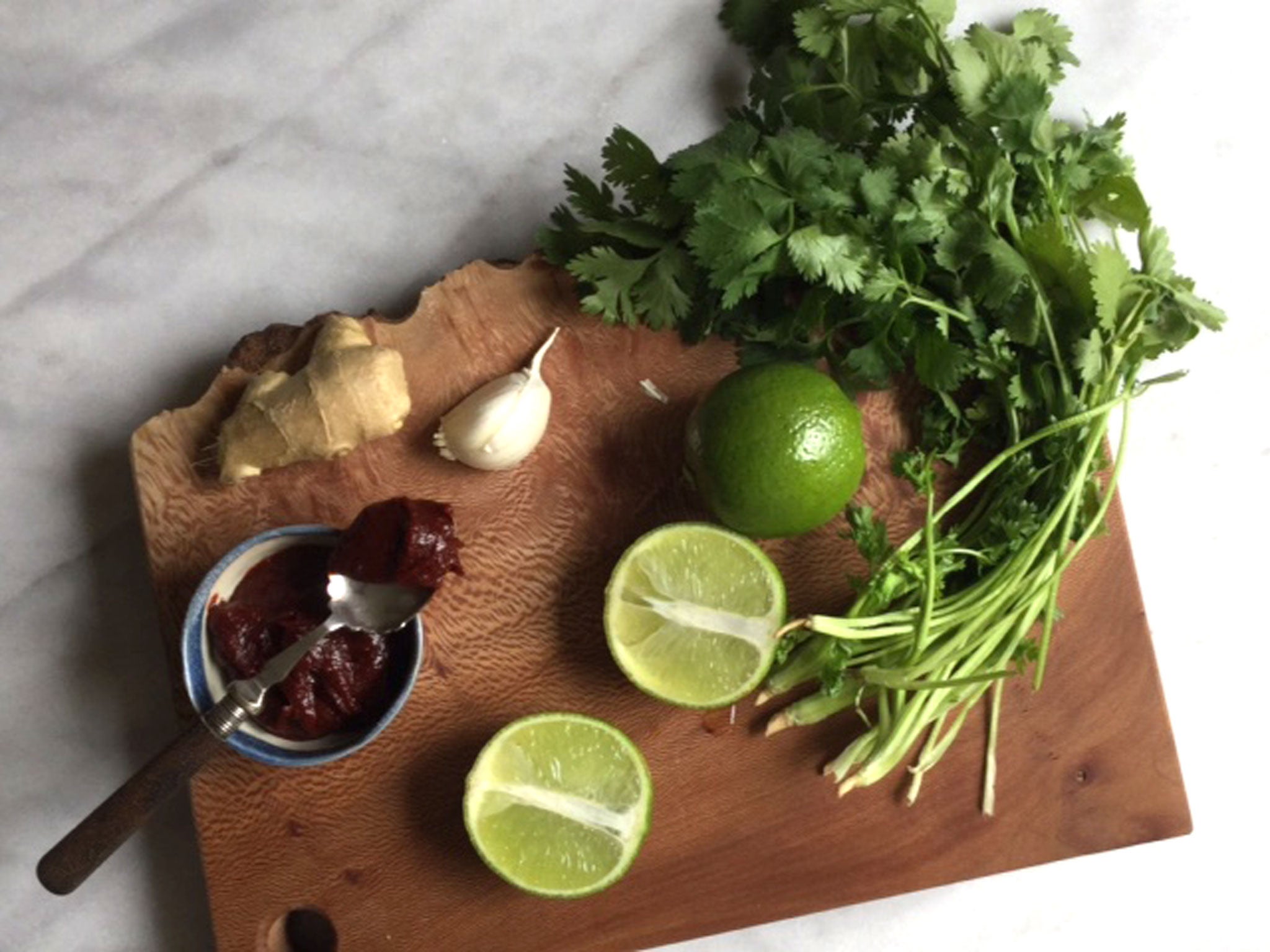How to spice up your summer suppers with Korean influences
Julia Platt Leonard climbs out of a cooking rut with the help of a fiery Korean paste

It’s oh-so easy to fall into a cooking rut. We all do it. You find yourself time pressed and whip up the same dish again and again. Sure they loved your tuna surprise the first hundred times you made it but now it’s greeted with audible yawns or barely concealed groans. Suddenly it’s not such a surprise anymore.
The good news? It doesn’t take much culinary muscle to climb out of a cooking rut. Sometimes all it takes is one ingredient.
These days, my new best friend is gochujang – a Korean hot pepper paste. The rise in popularity of Korean food – think kimchi and bibimbap – makes it much easier to find Korean ingredients these days. I found gochujang at a Korean market but you can buy it online too.
What is it? Gochujang is a savoury, spicy condiment made from red chilli, glutinous rice and fermented soybeans. It’s thick – we’re not talking about a pourable hot sauce here – and sticky with a hint of sweetness.
You’ll want to thin it out a bit before using but when you do the possibilities are endless. Brush it on a steak before grilling, mix a hefty dollop into some Greek yoghurt and serve with roasted vegetables, stir some into soup for a hit of chilli heat or spread it onto flat bread and top with leftover roast lamb.
Or use it for a marinade like I’ve done here. This couldn’t be easier – some garlic, ginger, and oil. That’s it. I used boneless chicken thighs because the dark meat stands up to the heat of a barbecue better than chicken breasts and they’re less expensive. Having said that, I use free-range thighs that cost more than bog-standard chicken but the taste is infinitely better. And it still only costs a few pounds for a serving of chicken (based on two thighs per person).
Pair it with a crisp salad chock full of raw vegetables and you’re in business. I like to serve the chicken on a platter with lots of lime wedges and a sprinkle of sea salt and some chopped coriander. Waltz into the dining room with that and folks will perk up. And next time you’re tempted to make your tuna surprise, toss in a tablespoon of gochujang – that’ll surprise them.
You can find gochujang in Korean markets and also online at www.souschef.co.uk
Spicy chicken thighs
You could make half of this recipe no problem, but any leftovers are a joy to have the next day – great sliced and served on a salad or tucked into pitta bread.
Serves 5-6
2 tbsp Gochujang
4 tbsp oil
1 clove garlic, finely minced
1 knob of ginger, about 20-30g
12 chicken thighs, about 1 kilo
Coriander, chopped for garnish
2 limes, cut into wedges
Salt
Place the gochujang, oil, and garlic in a large bowl. Grate the ginger. I find the easiest way is to take a teaspoon and drag it along the ginger to remove the outer skin. A grapefruit spoon with a serrated edge works particularly well. Then finely grate the ginger and add it to the marinade ingredients.
Put the chicken thighs in the marinade and toss to coat. Cover the bowl and place it in the refrigerator until you’re ready to barbecue – a couple of hours if you have the time.

You can cook the thighs on a medium hot barbecue or inside in a frying pan or ridged grill pan. Salt the side facing up. If your hot pepper paste contains sugar – and mine does – then keep an eye out because it can burn if you’re not careful.
Cook until nicely browned on one side – about 4 minutes or so – then turn and cook on the other. Again, sprinkle lightly with salt. If you’re unsure if the thighs are cooked then you can pierce one with a skewer – the cooking juices should run clear.
When done, remove to a serving dish. Drizzle with a bit of olive oil (optional), a sprinkle of sea salt, some chopped coriander and wedges of lime. Serve hot or at room temperature.
Join our commenting forum
Join thought-provoking conversations, follow other Independent readers and see their replies
Comments